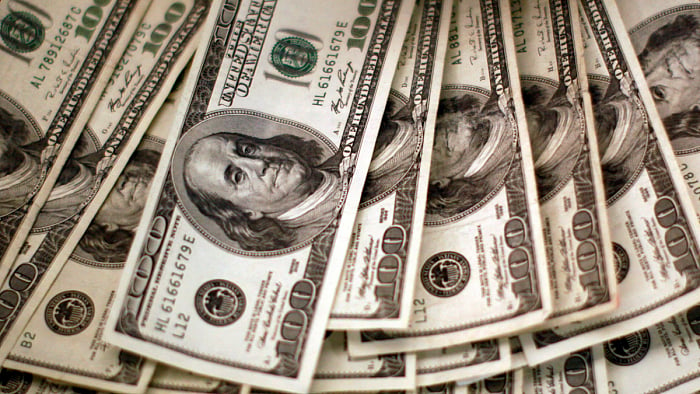
The US dollar fell on Tuesday as receding fears of a full-blown banking crisis slowed demand for so-called safe haven assets.
But the yen rallied, despite being a safe haven traditionally, with analysts pointing to a pick-up in flows ahead of the end of Japan's fiscal year on Friday.
The dollar fell as low as 130.51 yen, and was last off 0.29 per cent at 131.2 as the Japanese currency rose. That undid some of the dollar's 0.64 per cent jump against the yen in the previous session, which tracked a large rise in US government bond yields.
Analysts said Japanese companies were likely selling foreign bonds to bolster their balance sheets.
"The time of the year - the Japanese fiscal end - I think there are some flows from Japanese repatriating," said Bart Wakabayashi, branch manager at State Street in Tokyo.
"If that's it, it's pretty much a one-off, and then we'll get back to basics, which is essentially following yields."
Elsewhere, the euro and pound rose as markets took solace from First Citizens BancShares' agreement to buy all of the failed lender Silicon Valley Bank's deposits and loans, and the fact that no further cracks have emerged in global banking.
The euro was last up 0.27 per cent to $1.083. Sterling was 0.31 per cent higher at $1.233, just below a two-month high.
"Markets are just generally a little bit risk-positive … and the default position against that background is that the dollar drifts lower," said Adam Cole, chief currency strategist at RBC Capital Markets.
"We could be in this kind of risk-on, risk-off environment for a couple of months," Cole added.
The US dollar index - which gauges the currency against six peers, including the yen - fell 0.19 per cent to 102.56, after a 0.26 per cent drop on Monday.
Elsewhere, bitcoin slipped slightly to around $27,055, after a 3 per cent slide the previous day, amid problems at the world's biggest cryptocurrency exchange, Binance.
The company and its founder have been sued by the US Commodity Futures Trading Commission (CFTC). The exchange also suffered a technical glitch on Monday that forced it to temporarily suspend some operations.
The risk-sensitive Australian dollar rose sharply, getting an additional boost from better-than-expected retail sales data. It was last up 0.56 per cent to $0.669.